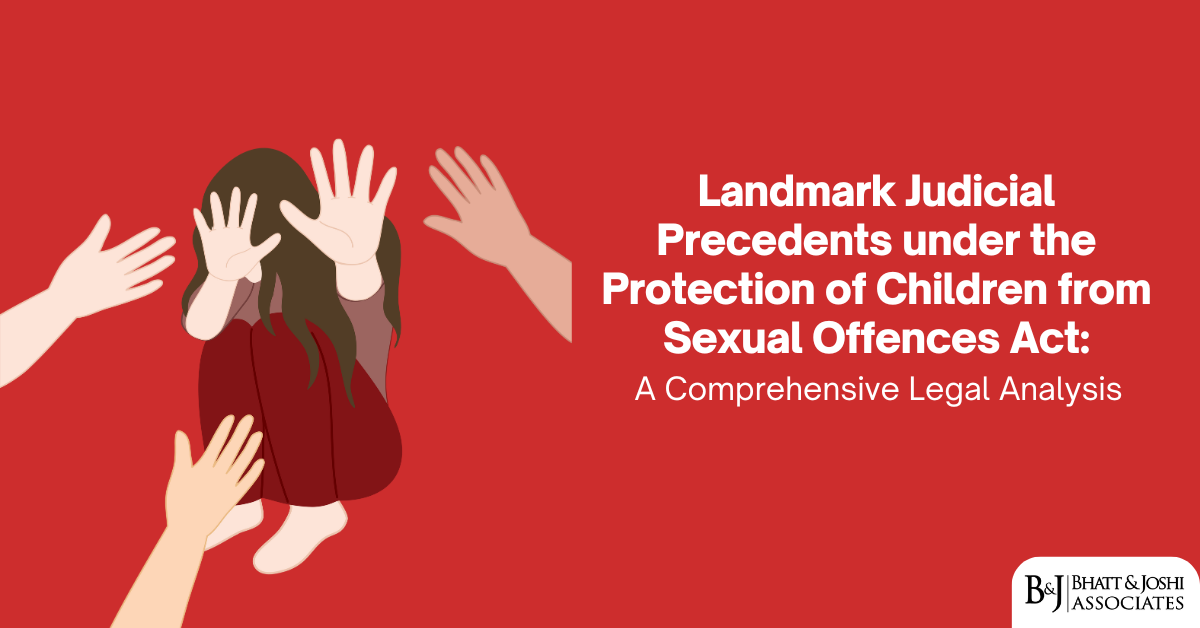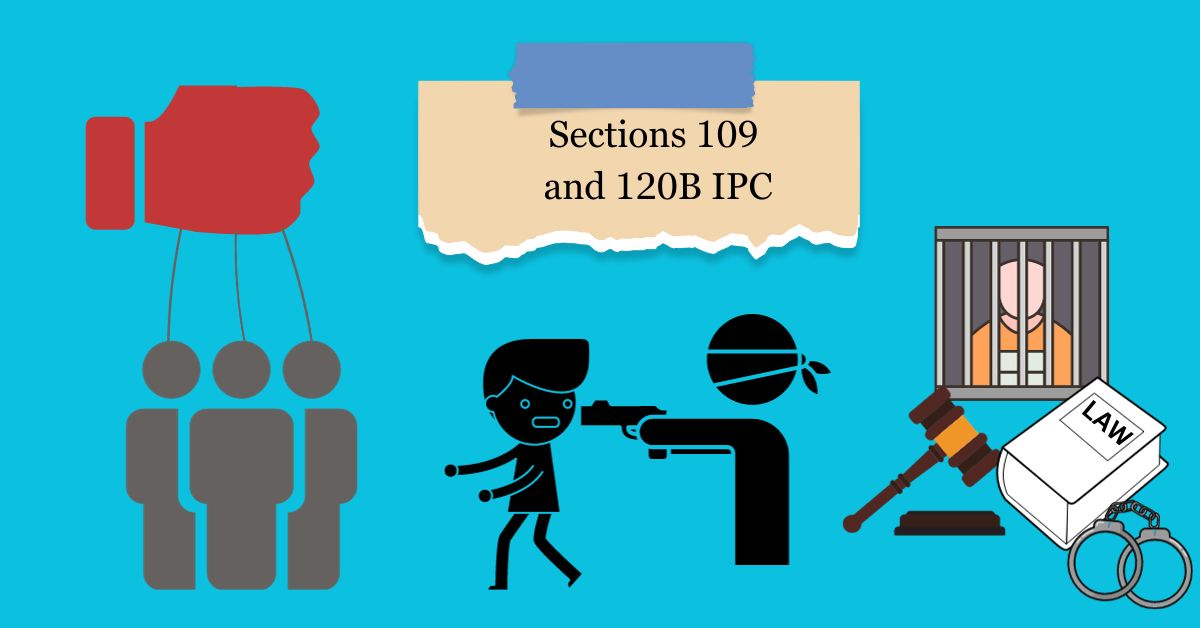Executive Summary
The Protection of Children from Sexual Offences Act, 2012 (POCSO Act) represents a watershed moment in India’s legislative framework for child protection. This article offers a comprehensive overview of the judicial interpretation of the POCSO Act, highlighting how courts have shaped its application to ensure justice for child victims. By analyzing key rulings from the Supreme Court and various High Courts, it demonstrates how judicial precedents have strengthened the Act’s protective framework while reinforcing procedural safeguards and constitutional principles.
The cases analyzed herein reflect the judiciary’s commitment to ensuring that the POCSO Act fulfills its statutory purpose of protecting children from sexual exploitation while maintaining procedural safeguards and constitutional principles. These judicial decisions have collectively established a robust jurisprudential framework that prioritizes child welfare, emphasizes the gravity of sexual offences against minors, and provides clear guidance for the effective implementation of child-friendly procedures in the criminal justice system.
Introduction
The Protection of Children from Sexual Offences Act, 2012, emerged as India’s response to the pressing need for comprehensive legislation specifically addressing sexual crimes against children. Unlike the general provisions under the Indian Penal Code, 1860, the POCSO Act provides a holistic framework that encompasses prevention, prosecution, and rehabilitation aspects of child sexual abuse cases. The Act’s significance lies not only in its substantive provisions but also in its procedural innovations designed to minimize secondary trauma to child victims.
Since its enactment, the Supreme Court of India and various High Courts have delivered several landmark judgments that have clarified ambiguities, strengthened protective mechanisms, and established precedents for the proper interpretation and application of the Act’s provisions. These judicial pronouncements have addressed critical issues ranging from the definition of sexual assault and the relevance of physical contact to procedural requirements for media reporting and court proceedings.
The evolution of POCSO jurisprudence reflects the judiciary’s nuanced understanding of child psychology, the complexities of sexual offence cases involving minors, and the need to balance the rights of the accused with the paramount consideration of child welfare. This analysis examines these judicial developments across several thematic categories, demonstrating how courts have consistently interpreted the Act’s provisions in favor of enhanced child protection.
Implementation and Judicial Interpretation of the POCSO Act Provisions
The Skin-to-Skin Contact Controversy: Attorney General for India v. Satish and Another (2021)
The most significant judicial interpretation of the POCSO Act came through the Supreme Court’s decisive intervention in Attorney General for India v. Satish and Another (2021). This landmark judgment arose from appeals challenging controversial decisions by the Bombay High Court that had created an artificial and legally unsustainable distinction regarding physical contact in sexual assault cases.
The case originated from incidents where the Bombay High Court, in judgments passed by Justice Pushpa Ganediwala, had held that pressing a child’s breast without removing her clothes would not constitute sexual assault under Section 7 of the POCSO Act since there was no “skin-to-skin” contact. The Attorney General for India KK Venugopal characterized this interpretation as creating a “dangerous and outrageous precedent,” arguing that such reasoning would mean that a person wearing surgical gloves while sexually abusing a child could escape conviction under the POCSO Act.
The Supreme Court, in a bench comprising Justices Uday Umesh Lalit, S. Ravindra Bhat, and Bela M. Trivedi, categorically rejected the High Court’s interpretation. The Court emphasized that Section 7 of the POCSO Act encompasses both direct and indirect touch, and that sexual intent is the determining factor rather than the nature of physical contact. The judgment established several critical legal principles:
Section 7 of the POCSO Act defines sexual assault comprehensively to include any act where a person “touches the vagina, penis, anus or breast of the child or makes the child touch the vagina, penis, anus or breast of such person or any other person, or does any other act with sexual intent which involves physical contact without penetration.” The Court’s judicial interpretation of the POCSO Act clarified that this definition does not require direct skin contact and that the phrase “any other act with sexual intent” should be interpreted liberally to protect children from various forms of sexual exploitation.
The Supreme Court noted that determining sexual intent requires examination of surrounding circumstances, including the nature of the relationship with the child, the length and purposefulness of contact, whether there was a legitimate non-sexual purpose for the contact, and the conduct of the accused before and after the incident. This comprehensive approach ensures that courts evaluate each case holistically rather than applying mechanical tests that could undermine the Act’s protective purpose.
The judgment’s significance extends beyond the immediate case, as it reinforced the principle that child protection legislation must be interpreted progressively to achieve its underlying objectives. Justice Ravindra S. Bhatt observed that “it is no part of any judge’s duty to strain the plain words of a statute, beyond recognition and to the point of its destruction, thereby denying the cry of the times that children desperately need the assurance of a law designed to protect their autonomy and dignity, as POCSO does”.
Age Determination Principles: Jarnail Singh v. State of Haryana (2013)
Age determination constitutes a fundamental aspect of POCSO Act proceedings, as the Act’s applicability depends on the victim being below 18 years of age. The Supreme Court in Jarnail Singh v. State of Haryana (2013) established that the procedure for determining the age of a child in conflict with law, as provided by the Juvenile Justice (Care and Protection of Children) Rules, 2007, can be followed in cases under the POCSO Act.
This decision addressed a crucial procedural gap in the POCSO Act, which did not contain specific provisions for age determination. The Court specifically relied on Rule 12(3) of the Juvenile Justice Rules, 2007, which establishes a hierarchy of documents for age verification, starting with birth certificates, followed by school records, and ultimately medical examination through bone ossification tests.
Rule 12(3) of the Juvenile Justice Rules, 2007 provides: “In every case concerning a child or a juvenile in conflict with law, the age determination inquiry shall be conducted by the competent authority/Juvenile Justice Board by seeking evidence by obtaining: (a) the matriculation or equivalent certificates, if available; and (b) the date of birth certificate from the school (other than a play school) first attended; and (c) the birth certificate given by a corporation or a municipal authority or a panchayat; (d) and only in the absence of either (a), (b) or (c) above, the medical opinion will be sought from a duly constituted Medical Board, which will declare the age of the juvenile/child. In case exact assessment of the age cannot be done, the Court or the Board will record a finding that the age of the child/juvenile is on or about a particular date.”
The Court emphasized that when determining a victim’s age in POCSO cases based on bone ossification tests, courts should consider the upper age of the estimated range as the victim’s age, following the principle of juvenility. This approach reflects the benevolent interpretation principle that operates in favor of protecting children’s rights and ensuring that borderline cases receive the benefit of doubt.
The practical significance of this judgment cannot be overstated, as proper age determination affects not only the applicability of the POCSO Act but also the nature of charges, sentencing provisions, and procedural protections available to victims. The judicial interpretation of the POCSO Act has emphasized the standardization of age determination procedures, bringing consistency to POCSO proceedings across different jurisdictions and reducing litigation on this fundamental issue.
Procedural Guidelines and Court Administration
Expediting POCSO Trials: Alakh Alok Srivastava v. Union of India (2018)
The timely disposal of cases constitutes a critical element in the effective implementation of any child protection legislation. The Supreme Court in Alakh Alok Srivastava v. Union of India (2018) addressed the alarming delays in POCSO case disposal and issued comprehensive guidelines to ensure speedy trials.
The petition highlighted the stark reality that cases under the POCSO Act were experiencing significant delays, with states like Uttar Pradesh having approximately 30,884 pending cases and Madhya Pradesh having approximately 10,117 pending cases at various stages of trial. These statistics contradicted the Act’s mandate under Section 35(2), which requires Special Courts to complete trials “as far as possible, within a period of one year from the date of taking cognizance of the offence.”
The Supreme Court, recognizing the urgent need for intervention, issued six comprehensive directions to High Courts across the country:
Direction 1: High Courts shall ensure that cases registered under the POCSO Act are tried and disposed of by Special Courts, with presiding officers sensitized in matters of child protection and psychological response.
Direction 2: Special Courts should be established where not already done and assigned responsibility to deal exclusively with POCSO Act cases.
Direction 3: Special Courts should fast-track cases by not granting needless adjournments and following procedures outlined in the POCSO Act for time-bound completion of trials.
Direction 4: Chief Justices of High Courts should form three-judge committees to oversee and supervise POCSO Act trials.
Direction 5: Adequate steps should be taken to provide child-friendly atmosphere in Special Courts.
Direction 6: Police authorities should constitute Special Task Forces to monitor investigation progress and ensure timely production of witnesses.
The Court emphasized that the POCSO Act was legislated keeping in view Article 15 of the Constitution, which empowers the State to make special provisions for children, and Article 39(f), which directs state policy toward securing that children develop in healthy conditions of freedom and dignity. This constitutional foundation underscores the State’s affirmative duty to create effective mechanisms for child protection.
The judgment also addressed the broader systemic issues affecting POCSO implementation. Section 37 of the POCSO Act provides that Special Courts shall try cases in camera and in the presence of parents or trusted persons, while Section 36 requires that children are not exposed to the accused during evidence recording. These provisions reflect the Act’s recognition that traditional court environments can be intimidating and potentially traumatizing for child victims.
Media Regulation and Identity Protection: Nipun Saxena v. Union of India (2019)
The protection of child victims’ identities represents a fundamental aspect of the POCSO Act’s protective framework. The Supreme Court in Nipun Saxena v. Union of India (2019) addressed critical issues regarding media reporting and the disclosure of victim identities in cases involving sexual offences against children.
Section 23 of the POCSO Act specifically addresses media procedures and establishes strict prohibitions on identity disclosure. The section provides:
“(1) No person shall make any report or present comments on any child from any form of media or studio or photographic facilities without having complete and authentic information, which may have the effect of lowering his reputation or infringing upon his privacy.
(2) No reports in any media shall disclose, the identity of a child including his name, address, photograph, family details, school, neighbourhood or any other particulars which may lead to disclosure of identity of the child:
Provided that for reasons to be recorded in writing, the Special Court, competent to try the case under the Act, may permit such disclosure, if in its opinion such disclosure is in the interest of the child.”
The Court emphasized that “the media is not only bound not to disclose the identity of the child but by law is mandated not to disclose any material which can lead to the disclosure of the identity of the child”. This interpretation extends protection beyond mere name disclosure to encompass any information that could lead to identification, including geographical details, school information, or family circumstances.
The Supreme Court issued detailed guidelines requiring that FIRs relating to offences under various sections of the IPC dealing with sexual offences and offences under the POCSO Act shall not be put in the public domain. These guidelines establish comprehensive protocols for protecting victim identities throughout the criminal justice process.
The judgment also addressed the issue of deceased victims, rejecting arguments that identity protection should apply only to living children. Through its judicial interpretation of the POCSO Act, the Court emphasized that “in the case of deceased victims, the consideration to be considered was the dignity of the dead, which could not be ignored.” This approach recognizes that posthumous dignity constitutes an important legal principle that extends protection beyond the victim’s lifetime.
The Court held that publishers and owners of media facilities are jointly and severally liable for their employees’ violations of Section 23 provisions. This vicarious liability principle ensures that media organizations implement adequate safeguards and training programs to prevent unauthorized disclosures.
Retrospective Application and Temporal Limitations
Constitutional Principles in POCSO Application: M. Loganathan v. State (2016)
The temporal application of the POCSO Act has generated significant jurisprudential discussion, particularly regarding its retrospective application to offences committed before its enactment. The Madras High Court in M. Loganathan v. State (2016) declared that conviction under Section 4 of the POCSO Act for an offence committed before the Act was enforced was unconstitutional.
This decision reflects the fundamental constitutional principle that criminal laws cannot be applied retrospectively to the prejudice of the accused, as enshrined in Article 20(1) of the Constitution of India, which provides that “no person shall be convicted of any offence except for violation of a law in force at the time of the commission of the act charged as an offence.” The principle of non-retroactivity in criminal law serves as a crucial safeguard against arbitrary prosecution and ensures legal certainty.
Section 4 of the POCSO Act deals with punishment for penetrative sexual assault and prescribes imprisonment of not less than seven years, which may extend to imprisonment for life, along with fine. The application of such enhanced punishments to conduct occurring before the Act’s commencement would violate established constitutional principles and due process requirements.
Proximate Application Requirements: Kanha v. State of Maharashtra (2017)
The Bombay High Court in Kanha v. State of Maharashtra (2017) addressed the temporal proximity requirement for POCSO Act application, accepting the argument that an accused cannot be prosecuted under Section 6 of the POCSO Act if the date of commission of the offence was not in proximity with November 14, 2012 (the Act’s enforcement date).
This judgment establishes that while the POCSO Act cannot be applied retrospectively, there must be reasonable temporal proximity between the offence and the Act’s enforcement to justify prosecution under its provisions. The decision reflects judicial sensitivity to constitutional limitations while ensuring that the Act’s protective purposes are not undermined by technical challenges regarding timing.
Section 6 of the POCSO Act prescribes punishment for aggravated penetrative sexual assault with imprisonment of not less than ten years, extending to imprisonment for life, and fine. The enhanced punishment framework under the POCSO Act, compared to general IPC provisions, necessitates careful consideration of temporal application to ensure constitutional compliance.
Procedural Innovations and Child-Friendly Mechanisms
Evidence Recording and Multiple Incident Handling: Hari Dev Acharya v. State (2021)
The Delhi High Court in Hari Dev Acharya v. State (2021) addressed the procedural question of whether separate incidents involving child sexual abuse can be combined in a single First Information Report (FIR), holding that since the POCSO Act is silent on this issue, the provisions of the Code of Criminal Procedure, 1973 would apply.
This decision demonstrates the practical approach adopted by courts in addressing procedural gaps in the POCSO Act. Section 154 of the Code of Criminal Procedure governs FIR registration and provides the framework for recording information about cognizable offences. The application of general criminal procedure provisions ensures that POCSO cases receive adequate procedural protections while maintaining investigative efficiency.
The judgment’s significance lies in its recognition that multiple incidents involving the same victim or accused can be efficiently handled through consolidated proceedings, reducing the trauma associated with repeated court appearances while ensuring that each incident receives proper legal consideration.
Evidence Evaluation Standards: Balaji Sarjerao Kamble v. State of Maharashtra (2017)
The Bombay High Court in Balaji Sarjerao Kamble v. State of Maharashtra (2017) established the important principle that merely because the date of the crime is not given by the victim, her evidence cannot be disregarded. This ruling recognizes the practical challenges faced by child victims in providing precise temporal details while ensuring that evidentiary standards remain appropriate for the unique circumstances of child testimony.
Child victims often experience trauma-related memory issues that affect their ability to provide exact dates and times of incidents. The Court’s approach acknowledges these psychological realities while maintaining the integrity of the evidence evaluation process. This principle ensures that technical deficiencies in testimony do not automatically result in case dismissal, provided that the core allegations are substantiated through other evidence.
The decision aligns with Section 25 of the POCSO Act, which provides special procedures for recording child testimony, recognizing that children require different evidentiary standards compared to adult witnesses. The Act’s emphasis on child-friendly procedures extends to evidence evaluation, ensuring that courts consider the unique circumstances affecting child victims’ ability to provide detailed testimony.
Systemic Challenges and Judicial Responses
Training and Sensitization Requirements
The effective implementation of the POCSO Act requires specialized knowledge and sensitivity from judicial officers, prosecutors, and court staff. Several High Court decisions have emphasized the need for comprehensive training programs to ensure that those involved in POCSO proceedings understand the Act’s objectives and procedural requirements.
Recent observations by the Madras High Court have highlighted instances where trial judges failed to appreciate relevant POCSO Act provisions, leading to improper application of sections and incorrect sentencing. These situations underscore the critical importance of specialized training for judicial officers handling child sexual abuse cases.
The training requirements extend beyond legal knowledge to encompass understanding of child psychology, trauma-informed approaches, and communication techniques appropriate for interacting with child victims. Such comprehensive preparation ensures that court proceedings minimize secondary trauma while gathering necessary evidence for effective prosecution.
Infrastructure and Resource Allocation
The establishment of dedicated Special Courts under Section 28 of the POCSO Act represents a significant infrastructure requirement that directly impacts the Act’s effectiveness. These courts must be equipped with child-friendly facilities, including separate waiting areas, age-appropriate furniture, and technology for in-camera proceedings that protect children from direct confrontation with accused persons.
Resource allocation challenges have affected the uniform establishment of Special Courts across different states, leading to disparities in case disposal rates and procedural compliance. The Supreme Court’s intervention in the Alakh Alok Srivastava case reflects recognition of these systemic challenges and the need for coordinated action across the judicial hierarchy.
Contemporary Developments and Future Directions
Integration with Digital Evidence Standards
The increasing role of digital technology in both the commission of sexual offences against children and their investigation has created new challenges for POCSO implementation. Courts have begun addressing issues related to digital evidence preservation, online sexual exploitation, and the use of technology in child-friendly evidence recording.
The intersection of the POCSO Act with Information Technology Act provisions and emerging cybercrime legislation requires careful judicial consideration to ensure comprehensive protection for children in digital environments. These developments reflect the evolving nature of child sexual abuse and the need for adaptive legal responses.
Victim Compensation and Rehabilitation Framework
Section 33(8) of the POCSO Act empowers Special Courts to direct payment of compensation for physical or mental trauma and immediate rehabilitation of child victims. The Supreme Court’s involvement in developing comprehensive compensation schemes through cases like Nipun Saxena demonstrates judicial recognition of the need for holistic victim support mechanisms.
The integration of compensation provisions with broader victim support services requires coordination between judicial, administrative, and social service agencies. Effective implementation of these provisions can significantly impact victims’ recovery and reintegration into normal life.
Conclusion
The judicial interpretation of the POCSO Act, 2012, reflects a consistent commitment to strengthening child protection mechanisms while maintaining constitutional principles and procedural safeguards. The landmark decisions examined in this analysis demonstrate how courts have addressed fundamental questions regarding the Act’s scope, application, and implementation.
From the Supreme Court’s decisive intervention in the skin-to-skin contact controversy to the establishment of comprehensive guidelines for court procedures and media regulation, these judgments have collectively created a robust jurisprudential framework that prioritizes child welfare. The decisions reflect sophisticated understanding of the challenges inherent in child sexual abuse cases and the need for specialized approaches that account for the unique vulnerabilities of minor victims.
The evolution of judicial interpretation of the POCSO Act illustrates the dynamic relationship between legislation and the judiciary in addressing complex social issues. As new challenges emerge, particularly in digital environments, the foundational principles established by these landmark decisions provide a solid framework for the continued development of child protection law.
The ongoing commitment of the Indian judiciary to progressive interpretation of child protection legislation offers hope for continued strengthening of legal safeguards for vulnerable children. However, the full realization of the POCSO Act’s objectives requires sustained effort across all levels of the criminal justice system, supported by adequate resources, training, and social commitment to child protection.
These judicial precedents serve not only as legal authorities but as beacons guiding the criminal justice system toward more effective protection of children from sexual exploitation. Their continued application and development of the judicial interpretation of the POCSO Act will be crucial in ensuring that the Act achieves its fundamental purpose of safeguarding the rights, dignity, and welfare of India’s children.
References
- Attorney General for India v. Satish and Another, Supreme Court of India (2021)
- Jarnail Singh v. State of Haryana, (2013) 7 SCC 263
- Alakh Alok Srivastava v. Union of India, (2018) 17 SCC 291
- Nipun Saxena v. Union of India, (2019) 2 SCC 703
- M. Loganathan v. State, Madras High Court (2016)
- Kanha v. State of Maharashtra, Bombay High Court (2017)
- Hari Dev Acharya v. State, Delhi High Court (2021)
- Balaji Sarjerao Kamble v. State of Maharashtra, Bombay High Court (2017)
- Protection of Children from Sexual Offences Act, 2012
- Protection of Children from Sexual Offences Rules, 2012













